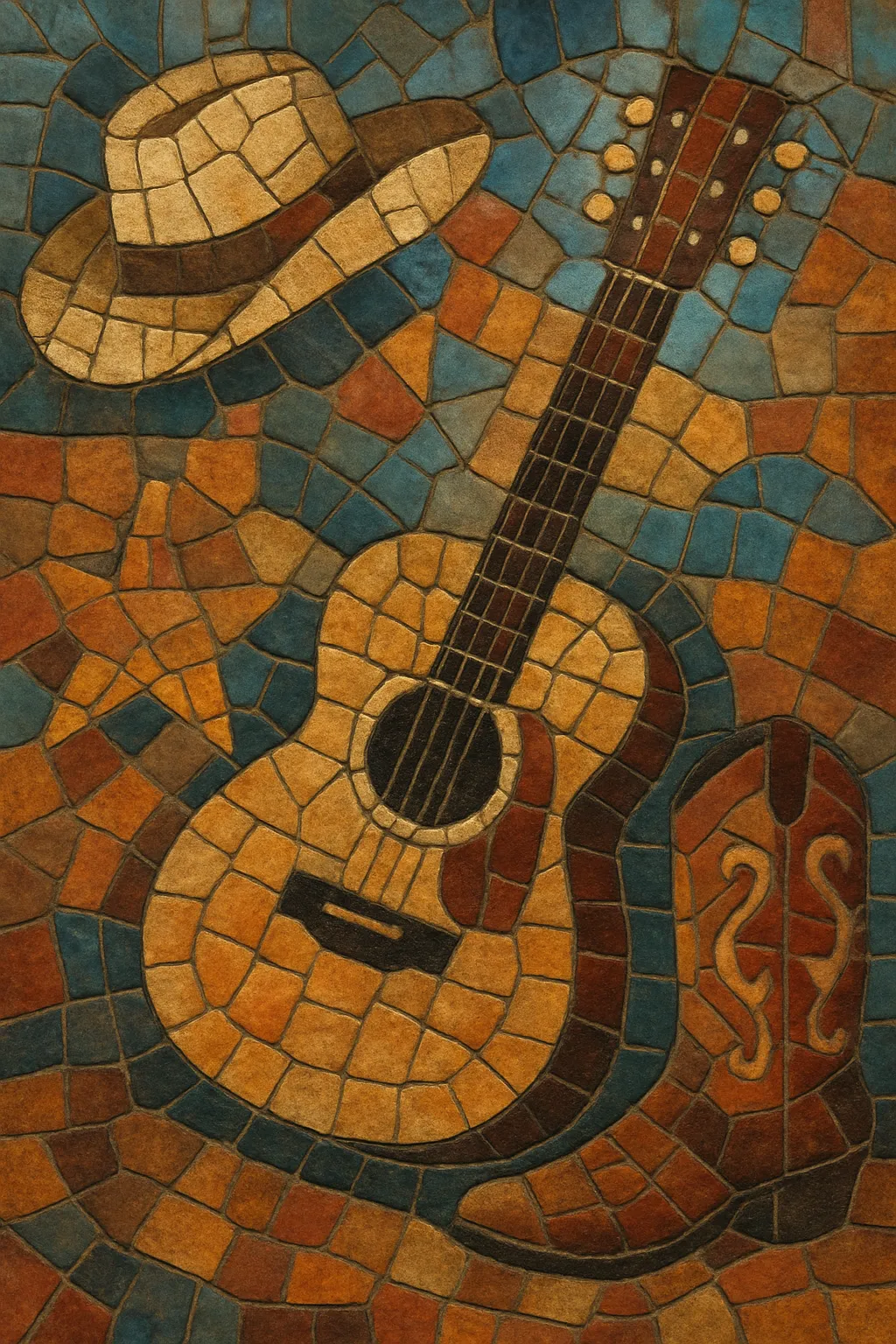Country is a roots-based popular music from the rural American South that blends Anglo-Celtic ballad traditions with African American blues, gospel, and string-band dance music.
It is characterized by narrative songwriting, plainspoken vocals with regional twang, and a palette of acoustic and electric instruments such as acoustic guitar, fiddle, banjo, pedal steel, and telecaster guitar.
Rhythmically it favors two-step feels, train beats, shuffles, and waltzes, while harmony is largely diatonic (I–IV–V) with occasional country chromaticism and secondary dominants.
Across a century, country has evolved through substyles like honky-tonk, the Nashville and Bakersfield sounds, outlaw country, neotraditionalist revivals, pop-country, and country-rap hybrids, but it consistently prioritizes storytelling about everyday life, love, work, faith, place, and identity.
Country coalesced in the 1920s from Southern U.S. string-band traditions, Anglo‑Celtic ballads, African American blues and gospel, and rural dance music. The 1927 Bristol Sessions (produced by Ralph Peer) famously documented early stars Jimmie Rodgers and the Carter Family, while WSM’s Grand Ole Opry (founded 1925) helped nationalize the sound.
The 1930s–40s saw radio barn dances and labels market “hillbilly” records, western swing in Texas and Oklahoma, and singing cowboys on film. Post‑war honky‑tonk (Hank Williams, Lefty Frizzell) added amplified guitars, walking bass, and barroom realism.
In Nashville, producers like Chet Atkins and Owen Bradley crafted the "Nashville Sound" with smoother vocals, strings, and pop polish (Patsy Cline, Jim Reeves). On the West Coast, the Bakersfield Sound (Buck Owens, Merle Haggard) pushed a leaner, twangy, drum-forward approach as an alternative to Nashville’s lush orchestrations.
Outlaw country (Willie Nelson, Waylon Jennings) reclaimed artistic autonomy and rougher sonics. The Urban Cowboy era brought mainstream disco‑era crossovers, followed by neotraditionalists (George Strait, Randy Travis) who revived classic instrumentation and songcraft.
Garth Brooks, Shania Twain, and others pushed country to arena scale with pop production. Parallel to this, alt‑country/Americana (Uncle Tupelo, Lucinda Williams) emphasized roots authenticity and indie aesthetics.
Pop‑country, bro‑country, and country‑rap blurred boundaries with rock, EDM, and hip‑hop (Taylor Swift’s early work, Florida Georgia Line). Viral moments like “Old Town Road” spotlighted genre fluidity, while artists like Chris Stapleton and Zach Bryan underscored a continued appetite for raw, songwriter-forward country.


